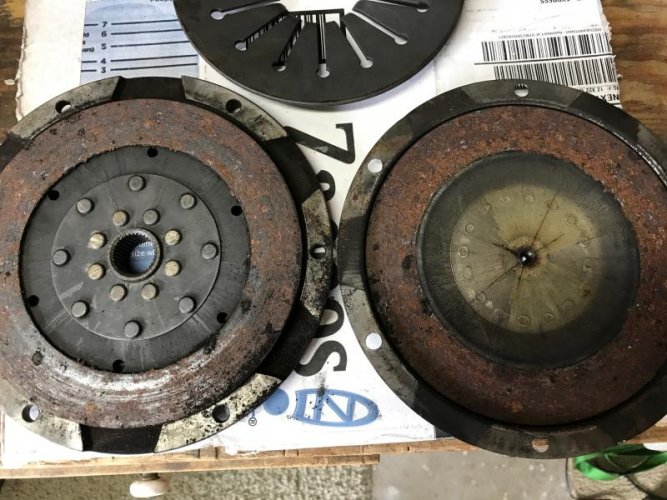Greetings,
I started a restoration project a year ago on an '72 R75/5. And let me say upfront that I'm not a mechanic but have enjoyed rummaging in and on this old airhead. Did something similar to a '84 R65 years a go.
This bike had been in an accident 10 years ago. I've done a complete tear-down and over time have pieced, cleaned, replaced and tinkered where necessary.
I thought I was nearing an initial attempt at starting the bike but now notice that, when I apply the clutch, the rear wheel will neither roll forward or backward (except for a little play). it seems to come up to hard stop, with a clunk, when I try to roll it forward (whileon the center stand). When I put the bike in neutral it does spin freely. I took the heads off to make shure the pistons weren't frozen (new rings) and I can get them to budge, reluctantly, using an allen wrench in the front rotor.
I used a cheater bar to fully depress the clutch arm and stilll no luck with the rear wheel.
So.... Is it the transmission? Clutch? Ideas to narrow down the issue?
Thanks in advance!
I started a restoration project a year ago on an '72 R75/5. And let me say upfront that I'm not a mechanic but have enjoyed rummaging in and on this old airhead. Did something similar to a '84 R65 years a go.
This bike had been in an accident 10 years ago. I've done a complete tear-down and over time have pieced, cleaned, replaced and tinkered where necessary.
I thought I was nearing an initial attempt at starting the bike but now notice that, when I apply the clutch, the rear wheel will neither roll forward or backward (except for a little play). it seems to come up to hard stop, with a clunk, when I try to roll it forward (whileon the center stand). When I put the bike in neutral it does spin freely. I took the heads off to make shure the pistons weren't frozen (new rings) and I can get them to budge, reluctantly, using an allen wrench in the front rotor.
I used a cheater bar to fully depress the clutch arm and stilll no luck with the rear wheel.
So.... Is it the transmission? Clutch? Ideas to narrow down the issue?
Thanks in advance!

